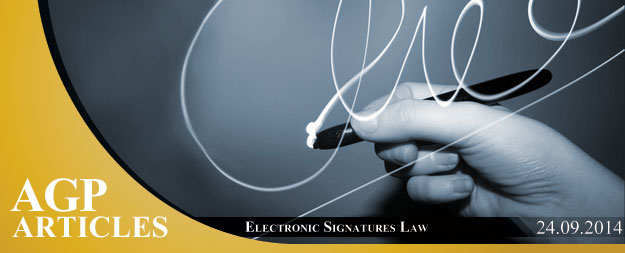
With the rise of commercial transactions being conducted across borders, at times at great distances, all by the means of the internet and new technological advances, comes the increase of a need to sign e-commerce contracts electronically.
Different jurisdictions have differing laws related to the different variations of e-signature and their value in court. Most countries (over 30) have adopted in their own way the UNICITRAL Model Law which includes the definition of e-signatures.
The purpose of the UNICITRAL Model Law is to establish a “mechanism for functional equivalence between electronic and handwritten signatures at the international level as well as for cross border recognition”. The US Code defines an electronic signature as “an electronic sound, symbol, or process, attached to or logically associated with a contract or other record and executed or adopted by a person with the intent to sign the record”.
Most European countries use the Electronic Communications Act 2000 (“2000 Act”) and the Electronic Signatures Regulations 2002 (SI No. 318 of 2002) (“2002 Regulations”) as the legal framework for e-signatures.
The difference between the definition of the electronic signature here and that of UNICITRAL Model Law is the use of the word “e-data” in the definition. This allows for a broader scope of what an e-signature could be. It also introduced the idea of an AES which is an “Advanced Electronic Signature”. This AES is a lot more secure than other types of e-signature and is sometimes called a digital signature.
A digital signature or AES actually carriers cryptographic assertion. When you sign in this way, a piece of data is included with a message that uses cryptographic methods to assure the integrity and authenticity of the signature.
It has 4 main features:
-
It can identify the signatory.
-
It is uniquely related to him/her.
-
It is under the sole control of the signatory.
-
The way it is attached to data makes it easy to see if changes have been made.
Another form of e-signature is a Biometric signature which includes things like fingerprints and iris patterns.
As new developments are being made in the field of e-commerce and electronic signatures, including mobile applications that enable you to e-sign from a mobile device, the question is:
How admissible are these types of signature in a court of law?
As mentioned above, this depends on the jurisdiction but in general in Europe, there are two necessary requirements that need to be met in order for an e-signature to even be considered and admitted as evidence in the court and those are:
-
that the e-signature is certified and
-
that it has been incorporated into an electronic communication and electronic data.
Through case law, it was shown that electronic communication and data include fax (PNC Telecom plc v. Thomas), morse code, and other types of communication. This was important to establish because if the document carrying the e-signature is not an e-communication or e-data, the case would not be valid. Just as in non-electronic commerce, whether there was a valid contract must also be proven… was there an offer? Acceptance? Consideration?
All these factors put together will determine how a court of law will react to a case that deals with an e-signature. What is certain though, is as advances in technology are improving, and the ability to create more secure signatures is being pushed to new boundaries, we also see an increase in the ability to hack into the most secure systems and an increase in fraud and identity theft. Bearing all of this in mind, the courts must always adapt their interpretation of the laws of e-commerce to remain up to date with technological advances and practices.













